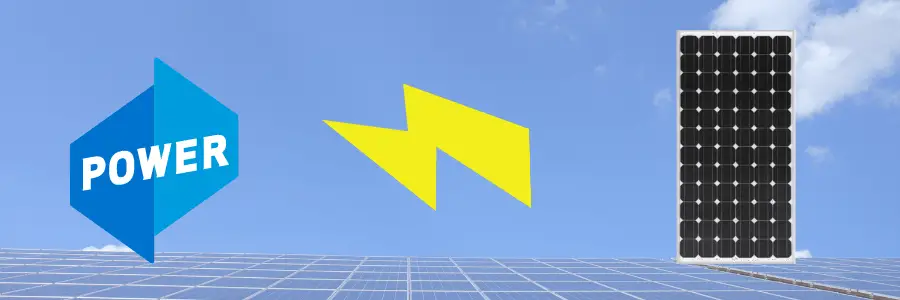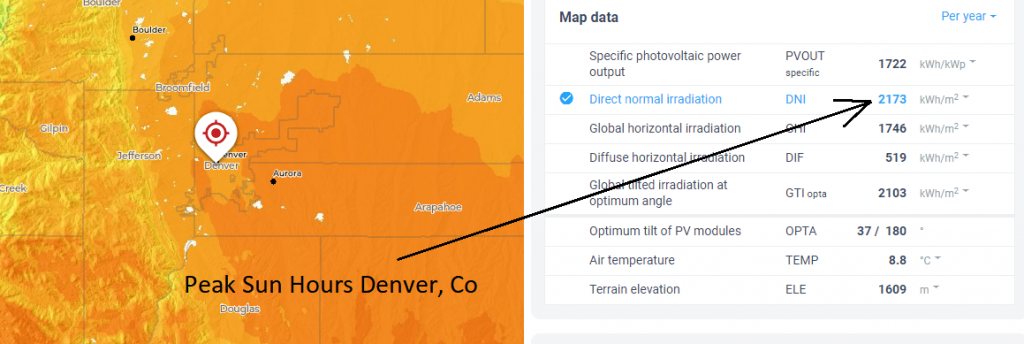How Much Power Does A 100 Watt Solar Panel Produce?

Does a 100 watt solar panel produce 100 watts of power??
In general, with irradiance of 4 peak-sun-hours per day, a 100 watt solar panel can produce about 400 watt-hours (Wh) of energy per day. MPPT charge controllers should be used to maintain the output at the panel’s Maximum Power Voltage of 17.5 volts and Maximum Power Current of 5.75 amps.
I’ve always been fascinated by solar panel technology. The idea of basically getting something for nothing, by converting the sun’s energy into electricity, strikes me as very cool.
As an electrical engineer, I have a pretty firm handle on the terminology professionals use to describe electricity but quickly found that it’s easy to get confused when it comes to solar panel power .
On the one hand we have amps and voltage, and on the other we have watts and watt-hours. In this post I’ll explain how all these things fit together and you’ll see how much power a 100 watt solar panel can generate.
What is solar power measured in?
Solar power is basically DC (direct current) electrical power and it’s measured in watts. The 4 basic units of measurements we commonly need when talking about solar panel output are:
- Power in watts
In a simple DC circuit watts = volts x amps
- Energy in watt-hours
When a panel generates watts over a time period, we call this energy in Wh – it’s simply watts x hours
- Current in amps
A current flows when a voltage is applied across a load, or resistance. Current is measured in amperes.
- Resistance in ohms
All circuits have resistance (R), in wires and components. For any given voltage, when R is low the current is high and vice versa.
Video – Exactly how much does a 100 watts solar panel generate?
Renogy Compact 100 Watt Solar Panel

How are solar panels rated?
The basic rating is in watts, but you need to look at the specifications to understand what that really means.
A 100 watt solar panel won’t always give 100 watts output power. In fact, most of the time it won’t! So where does this manufacturer’s rating come from? What will 100 watts power?
All solar panels are rated according to an international standard known as STC or Standard Test Conditions. The most important conditions for the declared rating are:
- Irradiance (sunshine power) of 1000watts/m2
- Ambient temperature of 77 degrees F (25 degrees C)
These are ideal laboratory conditions and you can expect to reduce that rating by about 15%, even in your best conditions.
In addition there are several normal solar losses that can reduce output even further.
How to measure solar power output?

Maximum solar panel watts is produced at the Maximum Power Point
How many volts does a 100 watt solar panel produce?
Solar panel open circuit voltage is about 22 volts, but this can vary a lot. The maximum power of the 100 watt panel above happens when Vpm is 17.4 volts and Imp is 5.75 amps.
This is called the Maximum Power Point (MPP) and it occurs when the load resistance equals the Characteristic Resistance (internal resistance) of the panel.
100 watt solar panel how many amps?
Maximum Power Current (Imp) is about 90% of Short Circuit Current (Isc), which occurs when the positive and negative solar panel leads are connected together – the panel is ‘short-circuited.’
For the 100 watt solar panel label shown in the image above, Isc is 6.32 amps and Imp (usable maximum current) is 5.75 amps.
Normally, a short-circuit in an electrical circuit is a very bad situation. In the case of solar panels, it’s done often in order to test current output.
How is that possible? Why doesn’t a solar panel burn out when shorted out?
The reason is that the voltage falls to zero. As power = volts x amps, when volts is zero, there is no power – any number multiplied by zero = zero.
Table – Voltages and Currents for 8 popular 100 watt solar panels
|
100 Watt Solar Panel Manufacturer |
Open Circuit Voltage (Ocv) |
Short Circuit Current (Isc) |
Maximum Power Voltage (Mpv) |
Maximum Power Current (Mpi) |
|
Renogy 100W |
22.5 volts |
5.75 amps |
18.5 volts |
5.29 amps |
|
HQST 100W |
21.3 |
5.83 |
18 |
5.58 |
|
RICH SOLAR 100 W |
22.6 |
5.86 |
18.5 |
5.41 |
|
WindyNation 100 W |
21.6 |
6.32 |
17.4 |
5.75 |
|
Newpowa 100 W |
20.23 |
6.25 |
17 |
5.89 |
|
ECO-WORTHY 100 W |
21.6 |
6.13 |
17.4 |
5.78 |
|
21.4 |
6.30 |
17.7 |
5.7 |
|
|
ROCKPALS SP003 100W (Folding) |
21.5 |
5.9 |
18 |
5.4 |
What is the difference between power and energy?
Discover your solar saving potential
Instantaneous solar power output is measured in watts. By instantaneous, I mean ‘measured at any instant in time.’
As soon as you consider watts for a duration on time, this energy delivered is called watt-hours. It’s simply the watts a solar panel generates per hour, or day, or year!
Professional solar installers often use rule-of-thumb guidelines for sizing domestic solar installation and sizing solar panels. One such guide is that a 100 watt solar panel will produce about 400 watt-hours of energy per day.
Where does the solar sizing rule-of-thumb come from?
Every location on the planet has a certain irradiance, which is the amount of sunshine energy falling on a flat surface. It’s measured in kilowatt-hours per square meter per day (or year) – kWh/m2/day(year).
Luckily, this cumbersome looking figure is also known as ‘peak-sun-hours’. It can be measured on location but it’s much easier to look it up for your city using a historical solar database such as the one found at Global Solar Atlas.
Renogy 100 Watt Solar Panel – Innovation Meets Quality – Shop Now!
How much power does a 100 watt solar panel produce in a day?
For this example I’ll choose a location in the US and use the data in the Global Solar Atlas to calculate the amount of energy I can expect from a 100 watt solar panel.
The image below shows the irradiance value per year for Denver Colorado

Multiply peak-sun-hours in Denver by 100 watts to find solar energy per day
- Annual irradiance is shown as 2173 kWh/m2/yr.
- Dividing by 365 we get 5.95 kWh/m2/day (also known as peak-sun-hours).
- Energy per 100 watt solar panel per day = 100 watts x 5.95 = 595 watt-hours.
How many amps does a 100W solar panel produce per hour?
This is not normally measured, as it can changed a lot. The best way is to convert the energy produced in watt-hours to amp-hours, which will give is some idea of the average current delivered per hour.
First of all, how much energy in watt-hours does a 100 watt solar panel generate in an hour?
- Daily energy 595 watt-hours / 12 hours = 50 watt-hours (average).
Next, convert an hour’s energy output into amp-hours:
- Using Vmp of 17.5 volts, 50 watt-hours equates to 2.86 amp-hours.
So on average throughout the day, a 100 watt solar panel will push out an average of 2.86 amps per hour.
Keep in mind this value will be much higher in the hours around mid-day, up to 5.75 amps, while much lower early morning and late evening – maybe not even 1 amp.
What size charge controller do I need for a 100W solar panel?
As the maximum current output of a 100 watt solar panel is 5.75 amps, then the lowest rated charge controller of 10 amp will be adequate.

Which is best for 100 watt solar panel MPPT or PWM?
Renogy Chargers – Innovation Meets Quality – Shop Now!
Which is the better charge controller MPPT or PWM?
The general rule is not to bother with an MPPT controller when dealing with low-power solar installations, even though they can be up to 40% more efficient than PWM.
IMO, MPPT are better because they adjust their internal resistance to match the Characteristic Resistance of the solar panel. This is when the Maximum Power Point is tracked and power output is optimized.
If you live in a location with normally very clear skies and high irradiance, I’d stick with the cheaper PWM controller. If you are in a relatively cloudy location, then MPPT perform best in these situations.





